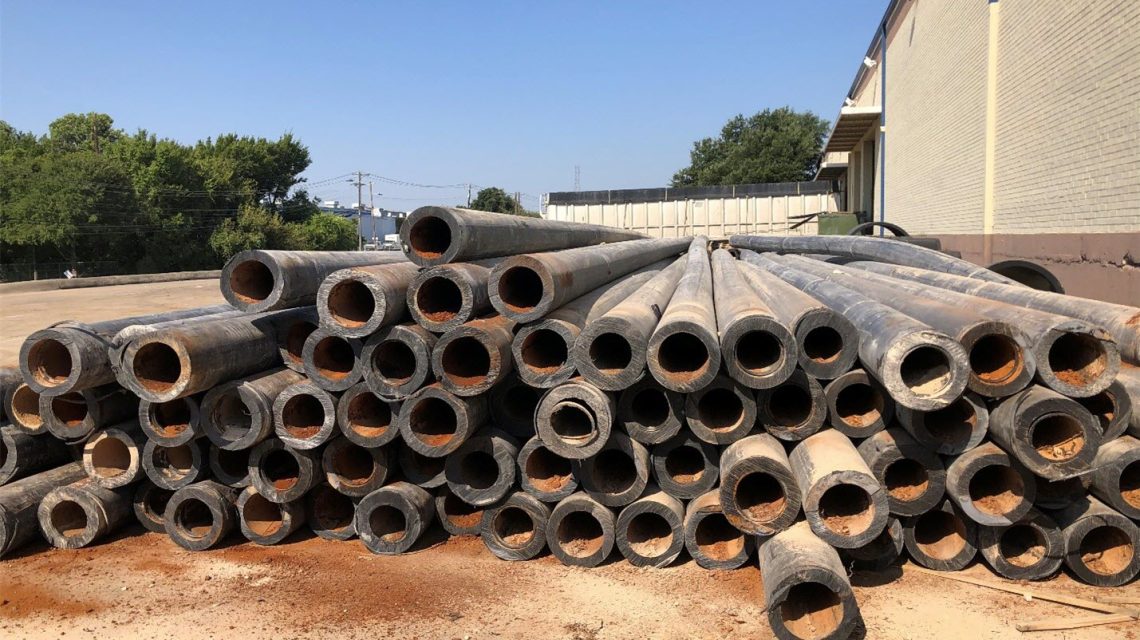High-Density Polyethylene (HDPE) pipes are widely used across North America for water distribution, gas lines, drainage systems, and industrial applications due to their durability, flexibility, and corrosion resistance. However, as infrastructure projects expand and old pipes are replaced, the question of what happens to scrap HDPE pipes becomes critical. Fortunately, HDPE is one of the most recyclable plastics, and with the help of local reprocessors, scrap pipes can be efficiently reintegrated into production—reducing waste and supporting a circular economy.
Why HDPE Pipes Are Highly Recyclable
HDPE (Resin Identification Code Number 2) is a thermoplastic polymer known for its strength and chemical resistance. Unlike some plastics that degrade significantly after recycling, HDPE can be reprocessed multiple times without losing much of its structural integrity. This makes it an excellent candidate for recycling, especially in the pipe industry where material performance is critical.
Key Benefits of Recycling HDPE Pipes:
- Reduced Environmental Impact – Diverts plastic waste from landfills and reduces the need for virgin plastic production.
- Energy Savings – Recycling HDPE consumes 70-90% less energy than manufacturing new plastic.
Industry Data Comparison Process Estimated Energy Use (per kg of HDPE) Virgin HDPE Production ~75–85 MJ (megajoules) HDPE Recycling ~10–25 MJ (Sources: U.S. EPA, Plastics Europe, and industry LCA studies) - Cost Efficiency – Reprocessed HDPE can be more affordable than virgin material, lowering production costs.
- Regulatory Compliance – Many states and provinces encourage or mandate recycling of construction and industrial plastics.
Challenges in Recycling HDPE Pipe Scrap
Despite its recyclability, several challenges exist in efficiently recovering and reprocessing HDPE pipe scrap:
- Contamination Issues
HDPE pipes used in gas or chemical applications may contain residues that require thorough cleaning before recycling. Dirt, adhesives, and metal fittings can also complicate the process. - Size and Transportation Logistics
Large-diameter pipes take up significant space, making transportation to recycling facilities costly. Cutting and granulating pipes on-site or finding a reprocessor close in proximity can help mitigate this issue. - Lack of Standardized Recycling Programs
Unlike consumer plastics (e.g., bottles), industrial HDPE pipe recycling programs are less established, leading to inconsistent collection and processing. - Quality Control in Reprocessing
To be reused in pipe manufacturing, recycled HDPE must meet strict quality standards. Contaminants or mixed plastics can degrade performance. - Lack of Dedicated, Trained Staff for In-House Reprocessing
Some manufacturers invest in shredders or grinders for in-house recycling. However, many failed to hit their recycling targets due to a lack of training or dedicated staffing.
How Local Reprocessors Can Help
Local plastic reprocessors play a crucial role in ensuring that HDPE pipe scrap is efficiently recycled and reintroduced into production. Here’s how they contribute:
- Specialized Processing for Industrial Scrap
Reprocessors with experience in HDPE pipes have the equipment to clean, shred, and pelletize the material to meet industry specifications. - Closed-Loop Recycling Solutions
Some reprocessors work directly with pipe manufacturers to take post-industrial scrap and return it as high-quality recycled pellets, reducing dependence on virgin plastic. - Cost-Effective Collection & Processing
By partnering with local recyclers, contractors and manufacturers can reduce transportation costs and ensure faster turnaround times for scrap processing. - Ensuring Material Traceability & Certification
Reputable reprocessors provide destruction certification and record-keeping services, helping manufacturers meet sustainability goals and regulatory requirements.
Best Practices for Maximizing HDPE Pipe Recycling
To make the recycling process as efficient as possible, pipe manufacturers and contractors should follow these best practices:
- Segregate HDPE Scrap at the Source
Keep HDPE pipe scrap separate from other plastics and contaminants to maintain quality. - Pre-Clean Pipes Before Recycling
Remove dirt, labels, and metal components to streamline the reprocessing stage. - Partner with Local Reprocessors Early
Engage with a reprocessor before a project begins to establish collection and recycling protocols. - Consider On-Size Reduction
Invest in granulators or shredders at job sites to reduce transportation costs. - Advocate for Industry Recycling Programs
Support initiatives that standardize HDPE pipe recycling to improve collection rates.
Conclusion
HDPE pipes are a sustainable choice not only for their long service life but also for their recyclability. By working with local reprocessors, manufacturers and contractors can ensure that scrap pipes are efficiently recycled and reintegrated into new production cycles. This not only benefits the environment but also enhances cost efficiency and supports the growing demand for sustainable infrastructure solutions.
As North America moves toward a more circular economy, the role of local reprocessors will become increasingly vital in closing the loop for HDPE pipe recycling. By adopting best practices and fostering partnerships, the industry can significantly reduce waste and promote a greener future.
Are you a contractor or manufacturer looking to recycle HDPE pipe scrap? Contact a local reprocessor such as C-Square Polymer today to explore sustainable solutions for your projects!


